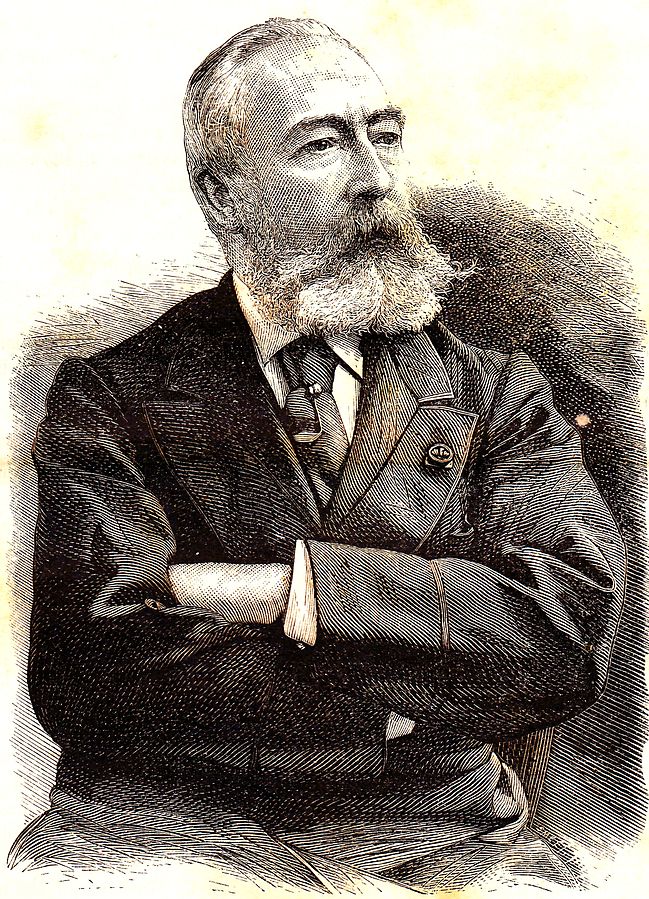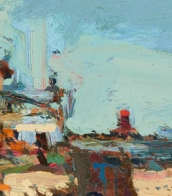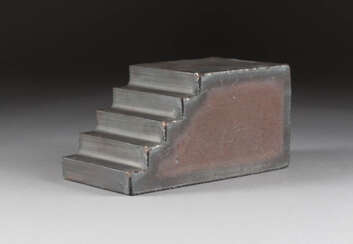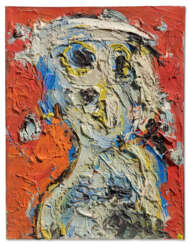карелия


Carel Nicolaas Visser was a Dutch sculptor. He studied at the Royal Academy of Art in The Hague, where he was influenced by the work of artists such as Piet Mondrian and Georges Vantongerloo.
Visser's early work was characterized by his use of industrial materials such as steel and iron. He often worked with found objects, transforming them into abstract sculptures that explored the relationship between form and space.
In the 1960s, Visser's work began to incorporate more organic shapes and materials, such as wood and stone. He continued to experiment with a wide range of materials throughout his career, creating sculptures that were often characterized by their simplicity and elegance.
Visser's work has been exhibited in major museums and galleries around the world, including the Stedelijk Museum in Amsterdam, the Centre Georges Pompidou in Paris, and the Museum of Modern Art in New York. He is considered one of the most important sculptors of the post-war period, and his influence can be seen in the work of many contemporary artists working today.


Carel Nicolaas Visser was a Dutch sculptor. He studied at the Royal Academy of Art in The Hague, where he was influenced by the work of artists such as Piet Mondrian and Georges Vantongerloo.
Visser's early work was characterized by his use of industrial materials such as steel and iron. He often worked with found objects, transforming them into abstract sculptures that explored the relationship between form and space.
In the 1960s, Visser's work began to incorporate more organic shapes and materials, such as wood and stone. He continued to experiment with a wide range of materials throughout his career, creating sculptures that were often characterized by their simplicity and elegance.
Visser's work has been exhibited in major museums and galleries around the world, including the Stedelijk Museum in Amsterdam, the Centre Georges Pompidou in Paris, and the Museum of Modern Art in New York. He is considered one of the most important sculptors of the post-war period, and his influence can be seen in the work of many contemporary artists working today.


Carel Nicolaas Visser was a Dutch sculptor. He studied at the Royal Academy of Art in The Hague, where he was influenced by the work of artists such as Piet Mondrian and Georges Vantongerloo.
Visser's early work was characterized by his use of industrial materials such as steel and iron. He often worked with found objects, transforming them into abstract sculptures that explored the relationship between form and space.
In the 1960s, Visser's work began to incorporate more organic shapes and materials, such as wood and stone. He continued to experiment with a wide range of materials throughout his career, creating sculptures that were often characterized by their simplicity and elegance.
Visser's work has been exhibited in major museums and galleries around the world, including the Stedelijk Museum in Amsterdam, the Centre Georges Pompidou in Paris, and the Museum of Modern Art in New York. He is considered one of the most important sculptors of the post-war period, and his influence can be seen in the work of many contemporary artists working today.


Carel Nicolaas Visser was a Dutch sculptor. He studied at the Royal Academy of Art in The Hague, where he was influenced by the work of artists such as Piet Mondrian and Georges Vantongerloo.
Visser's early work was characterized by his use of industrial materials such as steel and iron. He often worked with found objects, transforming them into abstract sculptures that explored the relationship between form and space.
In the 1960s, Visser's work began to incorporate more organic shapes and materials, such as wood and stone. He continued to experiment with a wide range of materials throughout his career, creating sculptures that were often characterized by their simplicity and elegance.
Visser's work has been exhibited in major museums and galleries around the world, including the Stedelijk Museum in Amsterdam, the Centre Georges Pompidou in Paris, and the Museum of Modern Art in New York. He is considered one of the most important sculptors of the post-war period, and his influence can be seen in the work of many contemporary artists working today.


Carel Nicolaas Visser was a Dutch sculptor. He studied at the Royal Academy of Art in The Hague, where he was influenced by the work of artists such as Piet Mondrian and Georges Vantongerloo.
Visser's early work was characterized by his use of industrial materials such as steel and iron. He often worked with found objects, transforming them into abstract sculptures that explored the relationship between form and space.
In the 1960s, Visser's work began to incorporate more organic shapes and materials, such as wood and stone. He continued to experiment with a wide range of materials throughout his career, creating sculptures that were often characterized by their simplicity and elegance.
Visser's work has been exhibited in major museums and galleries around the world, including the Stedelijk Museum in Amsterdam, the Centre Georges Pompidou in Paris, and the Museum of Modern Art in New York. He is considered one of the most important sculptors of the post-war period, and his influence can be seen in the work of many contemporary artists working today.


Carel Nicolaas Visser was a Dutch sculptor. He studied at the Royal Academy of Art in The Hague, where he was influenced by the work of artists such as Piet Mondrian and Georges Vantongerloo.
Visser's early work was characterized by his use of industrial materials such as steel and iron. He often worked with found objects, transforming them into abstract sculptures that explored the relationship between form and space.
In the 1960s, Visser's work began to incorporate more organic shapes and materials, such as wood and stone. He continued to experiment with a wide range of materials throughout his career, creating sculptures that were often characterized by their simplicity and elegance.
Visser's work has been exhibited in major museums and galleries around the world, including the Stedelijk Museum in Amsterdam, the Centre Georges Pompidou in Paris, and the Museum of Modern Art in New York. He is considered one of the most important sculptors of the post-war period, and his influence can be seen in the work of many contemporary artists working today.


Carel Nicolaas Visser was a Dutch sculptor. He studied at the Royal Academy of Art in The Hague, where he was influenced by the work of artists such as Piet Mondrian and Georges Vantongerloo.
Visser's early work was characterized by his use of industrial materials such as steel and iron. He often worked with found objects, transforming them into abstract sculptures that explored the relationship between form and space.
In the 1960s, Visser's work began to incorporate more organic shapes and materials, such as wood and stone. He continued to experiment with a wide range of materials throughout his career, creating sculptures that were often characterized by their simplicity and elegance.
Visser's work has been exhibited in major museums and galleries around the world, including the Stedelijk Museum in Amsterdam, the Centre Georges Pompidou in Paris, and the Museum of Modern Art in New York. He is considered one of the most important sculptors of the post-war period, and his influence can be seen in the work of many contemporary artists working today.


Willem Carel Nakken was a Dutch painter, draftsman and watercolourist.
Willem Carel Nakken painted genre scenes, landscapes, cityscapes, still lifes and animals. He is best known as a painter of horses.

.jpg)
Christiaan Karel Appel was a Dutch painter, sculptor, and poet. He started painting at the age of fourteen and studied at the Rijksakademie in Amsterdam in the 1940s. He was one of the founders of the avant-garde movement CoBrA in 1948. He was also an avid sculptor and has had works featured in MoMA and other museums worldwide.

.jpg)
Christiaan Karel Appel was a Dutch painter, sculptor, and poet. He started painting at the age of fourteen and studied at the Rijksakademie in Amsterdam in the 1940s. He was one of the founders of the avant-garde movement CoBrA in 1948. He was also an avid sculptor and has had works featured in MoMA and other museums worldwide.

.jpg)
Christiaan Karel Appel was a Dutch painter, sculptor, and poet. He started painting at the age of fourteen and studied at the Rijksakademie in Amsterdam in the 1940s. He was one of the founders of the avant-garde movement CoBrA in 1948. He was also an avid sculptor and has had works featured in MoMA and other museums worldwide.


Karel Frans Philippeau war ein niederländischer Genremaler. Philippeau studierte an der Koninklijke Academie voor Beeldende Kunsten van Amsterdam und Koninklijke Academie voor Schone Kunsten van Antwerpen. Die Jahre von 1850 bis 1855 verbrachte er in Italien, meist in Rom, 1853 besuchte er Venedig und Florenz. In den Uffizien kopierte er die Werke alter Meister. 1855 wurde er Mitglied von Arti et Amicitiae in Amsterdam.


Herman Frederik Carel, or Herman ten Kate, the Elder was a Dutch artist known for his paintings, drawings, and prints. He was notable as a teacher, and renowned for his watercolours and paintings of historical genre with emphasis on military figures. His career started in 1837. Some of Ten Kate's paintings, which were very popular with the public, depicted interior scenes of guard rooms with Spanish or Dutch soldiers in uniform. His colouring was rich, and his brushwork was careful.

.jpg)
Christiaan Karel Appel was a Dutch painter, sculptor, and poet. He started painting at the age of fourteen and studied at the Rijksakademie in Amsterdam in the 1940s. He was one of the founders of the avant-garde movement CoBrA in 1948. He was also an avid sculptor and has had works featured in MoMA and other museums worldwide.

.jpg)
Christiaan Karel Appel was a Dutch painter, sculptor, and poet. He started painting at the age of fourteen and studied at the Rijksakademie in Amsterdam in the 1940s. He was one of the founders of the avant-garde movement CoBrA in 1948. He was also an avid sculptor and has had works featured in MoMA and other museums worldwide.

.jpg)
Christiaan Karel Appel was a Dutch painter, sculptor, and poet. He started painting at the age of fourteen and studied at the Rijksakademie in Amsterdam in the 1940s. He was one of the founders of the avant-garde movement CoBrA in 1948. He was also an avid sculptor and has had works featured in MoMA and other museums worldwide.

.jpg)
Christiaan Karel Appel was a Dutch painter, sculptor, and poet. He started painting at the age of fourteen and studied at the Rijksakademie in Amsterdam in the 1940s. He was one of the founders of the avant-garde movement CoBrA in 1948. He was also an avid sculptor and has had works featured in MoMA and other museums worldwide.

.jpg)
Christiaan Karel Appel was a Dutch painter, sculptor, and poet. He started painting at the age of fourteen and studied at the Rijksakademie in Amsterdam in the 1940s. He was one of the founders of the avant-garde movement CoBrA in 1948. He was also an avid sculptor and has had works featured in MoMA and other museums worldwide.

.jpg)
Christiaan Karel Appel was a Dutch painter, sculptor, and poet. He started painting at the age of fourteen and studied at the Rijksakademie in Amsterdam in the 1940s. He was one of the founders of the avant-garde movement CoBrA in 1948. He was also an avid sculptor and has had works featured in MoMA and other museums worldwide.


Herman Frederik Carel, or Herman ten Kate, the Elder was a Dutch artist known for his paintings, drawings, and prints. He was notable as a teacher, and renowned for his watercolours and paintings of historical genre with emphasis on military figures. His career started in 1837. Some of Ten Kate's paintings, which were very popular with the public, depicted interior scenes of guard rooms with Spanish or Dutch soldiers in uniform. His colouring was rich, and his brushwork was careful.

.jpg)
Christiaan Karel Appel was a Dutch painter, sculptor, and poet. He started painting at the age of fourteen and studied at the Rijksakademie in Amsterdam in the 1940s. He was one of the founders of the avant-garde movement CoBrA in 1948. He was also an avid sculptor and has had works featured in MoMA and other museums worldwide.

.jpg)
Christiaan Karel Appel was a Dutch painter, sculptor, and poet. He started painting at the age of fourteen and studied at the Rijksakademie in Amsterdam in the 1940s. He was one of the founders of the avant-garde movement CoBrA in 1948. He was also an avid sculptor and has had works featured in MoMA and other museums worldwide.


Karel Dujardin was a Dutch painter and printmaker of the Golden Age of Dutch painting.
He studied with Klaas Berchem and Paulus Potter, traveled to Italy, and lived in Lyon. In 1656 he participated in the founding of the Pictura Society in The Hague.
Dujardin painted mostly Italian landscapes, genre scenes, including scenes from rural life, portraits of elegant people and historical paintings.
Many of Dujardin's works are in the Louvre, the Hermitage (St. Petersburg), as well as in Amsterdam, The Hague, Kassel, and Berlin.

.jpg)
Christiaan Karel Appel was a Dutch painter, sculptor, and poet. He started painting at the age of fourteen and studied at the Rijksakademie in Amsterdam in the 1940s. He was one of the founders of the avant-garde movement CoBrA in 1948. He was also an avid sculptor and has had works featured in MoMA and other museums worldwide.

.jpg)
Christiaan Karel Appel was a Dutch painter, sculptor, and poet. He started painting at the age of fourteen and studied at the Rijksakademie in Amsterdam in the 1940s. He was one of the founders of the avant-garde movement CoBrA in 1948. He was also an avid sculptor and has had works featured in MoMA and other museums worldwide.

.jpg)
Christiaan Karel Appel was a Dutch painter, sculptor, and poet. He started painting at the age of fourteen and studied at the Rijksakademie in Amsterdam in the 1940s. He was one of the founders of the avant-garde movement CoBrA in 1948. He was also an avid sculptor and has had works featured in MoMA and other museums worldwide.

.jpg)
Christiaan Karel Appel was a Dutch painter, sculptor, and poet. He started painting at the age of fourteen and studied at the Rijksakademie in Amsterdam in the 1940s. He was one of the founders of the avant-garde movement CoBrA in 1948. He was also an avid sculptor and has had works featured in MoMA and other museums worldwide.

.jpg)
Christiaan Karel Appel was a Dutch painter, sculptor, and poet. He started painting at the age of fourteen and studied at the Rijksakademie in Amsterdam in the 1940s. He was one of the founders of the avant-garde movement CoBrA in 1948. He was also an avid sculptor and has had works featured in MoMA and other museums worldwide.

.jpg)
Christiaan Karel Appel was a Dutch painter, sculptor, and poet. He started painting at the age of fourteen and studied at the Rijksakademie in Amsterdam in the 1940s. He was one of the founders of the avant-garde movement CoBrA in 1948. He was also an avid sculptor and has had works featured in MoMA and other museums worldwide.

![Крамарж, К. Русский кризис: С дополнениями и изменениями автора, [сделанными для русского издания] / К.П. Крамарж; пер. с чешскаго А.С. Изгоева.](/assets/image/picture_4558638/885ce/0jqivvgshafi00lav219ktsynf0aynnhgoyku1ux2gh-wuu7u0udicr4pcxii9sw1744793283jpg__fix_374_244.jpeg)
![Крамарж, К. Русский кризис: С дополнениями и изменениями автора, [сделанными для русского издания] / К.П. Крамарж; пер. с чешскаго А.С. Изгоева.](https://veryimportantlot.com/assets/image/picture_4558638/885ce/0jqivvgshafi00lav219ktsynf0aynnhgoyku1ux2gh-wuu7u0udicr4pcxii9sw1744793283jpg__fix_374_244.jpeg)

























































